Small Sofa and Couch Buying Guide: Space-Saving Solutions for Compact Living
Finding the perfect small sofa or couch represents one of the most important furniture decisions for compact living spaces. The right compact seating solution can transform a cramped apartment, cozy studio, or small living room into a functional, inviting space that balances comfort, style, and practicality. With urban living spaces becoming increasingly smaller and more people embracing minimalist lifestyles, the demand for intelligently designed compact furniture has never been greater.
This comprehensive guide provides detailed insights into selecting small sofas and couches that maximize your available space without compromising on comfort or aesthetic appeal. We've compiled expert advice on measuring your space accurately, choosing styles that enhance room proportions, selecting durable materials suited to compact living, and identifying space-saving features that add functionality. Whether you're furnishing a studio apartment, small living room, home office, or bonus room, this resource will help you make informed decisions that optimize both space and style.
Top Small Sofa and Couch Recommendations
⚠️ AFFILIATE DISCLOSURE: This website contains affiliate links. As an Amazon Associate, we earn from qualifying purchases. If you make a purchase through these links, we may receive a small commission at no additional cost to you. Read our full affiliate policy.
Small Sofa Comparison & Recommendations
Which Small Sofa is Right for Your Space?
🏆 Best Overall: Apartment Sofa
Apartment Sofa
💰 Best Value: Loveseat
Loveseat
⚡ Best for Flexibility: Apartment Sectional
Apartment Sectional
Small Sofa Comparison Summary
- Space Efficiency: Loveseats work best in very tight spaces while apartment sofas offer more seating in slightly larger areas
- Seating Capacity: Apartment sofas typically seat 2-3 people comfortably while loveseats are designed for two
- Flexibility: Apartment sectionals offer configuration options that fixed sofas cannot match
- Style Impact: Apartment sofas often serve as visual centerpieces while loveseats work as complementary pieces
- Delivery Considerations: Smaller sofas and modular pieces typically offer easier delivery through standard doorways
Small Sofa Advantages & Practical Considerations
Understanding the benefits and limitations of small sofas helps ensure you make choices that work for your lifestyle and space constraints. Here's a balanced analysis based on extensive research and user experiences with compact seating solutions:
✅ Small Sofa Advantages
Space Optimization: Small sofas maximize seating in minimal square footage, making them ideal for apartments, condos, and compact living rooms where every inch counts.
Room Proportion: Properly scaled furniture makes small rooms feel larger and more balanced, preventing the overwhelmed feeling that oversized pieces create.
Flexible Placement: Compact dimensions allow for creative furniture arrangements and easier room reconfiguration as needs change.
Cost Effectiveness: Smaller sofas typically cost less than full-size versions, offering budget-friendly options without sacrificing style or quality.
Easier Mobility: Lighter weight and smaller size make moving and rearranging much simpler, especially important for renters or those who frequently refresh their decor.
❌ Small Sofa Considerations
Limited Seating: Compact sofas typically seat fewer people, which may require supplementary seating options for entertaining guests.
Reduced Stretch-Out Space: Less surface area for lounging horizontally may affect comfort for tall individuals or those who enjoy sprawling out.
Proportional Challenges: Finding appropriately scaled accent furniture like end tables and coffee tables can require more careful shopping.
Fewer Feature Options: Some premium features like reclining mechanisms or built-in USB ports may be less common in compact models.
Style Limitations: Certain dramatic or statement sofa styles may not be available in space-efficient dimensions.
Practical Analysis
Small sofas deliver exceptional value for urban dwellers and those with compact living spaces. While they require some compromises in seating capacity and sprawling comfort, their space-efficient designs, proportional benefits, and budget-friendly nature make them intelligent choices for maximizing small living areas. Modern small sofas increasingly incorporate high-end features and premium materials previously found only in full-size models.
Step-by-Step Guide to Choosing the Perfect Small Sofa
Selecting the ideal small sofa requires careful planning and consideration of multiple factors specific to compact spaces. Follow this comprehensive guide to make informed decisions that balance proportions, functionality, comfort, and aesthetic appeal for lasting satisfaction in your small living area:
8 Essential Steps for Choosing Perfect Small Seating
1. Measure Your Space Precisely
Create a detailed floor plan with accurate measurements of room dimensions, doorways, windows, and traffic patterns. Use painter's tape to mark furniture footprints on your floor before purchasing to visualize scale and flow. Remember to measure entryways and staircases to ensure delivery feasibility.
2. Consider Room Function & Daily Use
Analyze how you use your space daily. For frequent entertaining, prioritize seating capacity; for primarily solo use, focus on personal comfort. Multi-functional spaces might benefit from sleeper sofas or storage-equipped models. Consider traffic flow and ensure at least 18 inches of walking space around the sofa.
3. Select Appropriate Sizing & Scale
Choose furniture proportional to your room size. In very small spaces, loveseats and apartment sofas prevent overcrowding. Low-profile designs with exposed legs create visual space. Consider the sofa's visual weight - lighter colors and streamlined designs feel less imposing in compact rooms.
4. Choose Durable, Appropriate Materials
Select upholstery fabrics that match your lifestyle. Performance fabrics and microfiber offer excellent durability and stain resistance for households with children or pets. In small spaces where furniture gets frequent use, high rub counts (over 15,000 double rubs) ensure longevity. Lighter colors can make spaces feel larger but may show more wear.
5. Evaluate Comfort & Support Quality
Test seat depth, back height, and cushion firmness carefully. Look for high-resiliency foam, quality spring systems, and adequate seat depth (at least 20 inches for comfortable seating). In small spaces where the sofa may serve multiple functions, consider firmness that supports both sitting and occasional lounging.
6. Assess Construction & Frame Quality
Look for kiln-dried hardwood frames, corner blocks, and reinforced joints even in smaller sofas. Quality construction ensures longevity despite frequent use in multi-functional small spaces. Eight-way hand-tied springs or quality sinuous spring systems maintain comfort over years of use in your primary seating.
7. Maximize Functionality with Smart Features
Consider space-enhancing features like raised legs, low profiles, and slim arms. Look for multi-functional designs with storage compartments, pull-out sleepers, or modular configurations. Armless chairs and backless benches can provide extra seating when needed without permanent space commitment.
8. Plan for Long-Term Flexibility
Think about how your needs might change over time. Modular sectionals offer reconfiguration options as your space evolves. Neutral fabrics and classic styles withstand changing decor preferences better than bold patterns or trendy designs. Consider how the sofa might work in different arrangements or future homes.
Small Sofa Recommendations by Room Type
- Studio Apartments: Apartment sofas or small sectionals that define living areas without overwhelming the space
- Small Living Rooms: Loveseats with accent chairs or apartment sofas with slim profiles
- Bedroom Sitting Areas: Compact loveseats, settees, or apartment-size chaise lounges
- Home Offices: Small sofas or loveseats that provide guest seating without dominating the workspace
- Multi-Functional Spaces: Sleeper sofas or storage-equipped models that serve dual purposes
Frequently Asked Questions About Small Sofas and Couches
What is the difference between a small sofa and a loveseat?
Small sofas typically seat 2-3 people and measure 60-72 inches wide, while loveseats are specifically designed for two people and usually measure 48-60 inches wide. Small sofas offer more seating capacity while still fitting compact spaces, whereas loveseats are ideal for very tight areas or as supplementary seating. The terms are sometimes used interchangeably, but loveseats specifically refer to two-seater designs, while small sofas can include various compact styles including apartment sofas and settees.
How do I measure my space for a small sofa?
Measure the length, width, and height of your room, noting doorways, windows, and traffic patterns. Leave at least 18 inches of walking space around the sofa and ensure it doesn't block natural pathways. Create a floor plan with painter's tape to visualize the sofa's footprint before purchasing. Don't forget to measure entryways, staircases, and elevators to ensure delivery feasibility. Consider the sofa's scale in relation to other furniture and allow space for doors and drawers to open fully.
What are the best sofa styles for small spaces?
Apartment sofas, loveseats, apartment sectionals, and settees work well in small spaces. Look for sofas with exposed legs to create visual space, low profiles, and slim arms. Armless designs and backless benches provide maximum space efficiency in very compact areas. English roll arms, track arms, and tight backs tend to work better in small spaces than oversized rolled arms or loose pillow backs. Furniture with visible legs creates an airy feeling that makes spaces appear larger.
Can a small sofa still be comfortable?
Yes, modern small sofas can be very comfortable with quality cushioning and proper seat depth. Look for high-density foam cushions, adequate seat depth (at least 20 inches), and supportive back cushions. Many compact sofas now feature deep seats and plush cushioning comparable to full-size models. The key is prioritizing quality construction and materials - a well-made small sofa often provides better comfort than a poorly constructed large one. Test different cushion densities and seat depths to find your comfort preference.
What materials work best for small sofas in homes with pets or children?
Performance fabrics, microfiber, and leather are excellent choices for households with pets or children. These materials are durable, stain-resistant, and easy to clean. Look for fabrics with high rub counts (over 15,000 double rubs) for better durability in frequently used furniture. Crypton and Sunbrella fabrics offer exceptional stain and moisture resistance. Leather develops a patina over time and is easy to wipe clean. Medium tones and patterns tend to show less wear and staining than very light or dark solid colors in high-use situations.
Conclusion
Choosing the right small sofa or couch requires careful consideration of your space constraints, lifestyle needs, and design preferences. From space-efficient apartment sofas and classic loveseats to flexible apartment sectionals, there are compact seating solutions to suit every small living scenario. The ideal small sofa should not only provide comfortable seating but also enhance your space's functionality, proportions, and aesthetic appeal.
Small sofas are particularly valuable for urban dwellers, apartment residents, and anyone looking to maximize limited square footage. While requiring thoughtful planning for proportion and placement, the right compact seating solution significantly enhances living experiences in small spaces and can serve as a stylish, functional centerpiece for years to come.
Ready to Choose Your Perfect Small Sofa?
Check out the best small sofa and couch selections above and find the pieces that best suit your space requirements. Each product has been selected based on thorough research and user reviews to ensure you get quality seating solutions that optimize both comfort and space efficiency for your compact living area.
Related Articles You Might Like
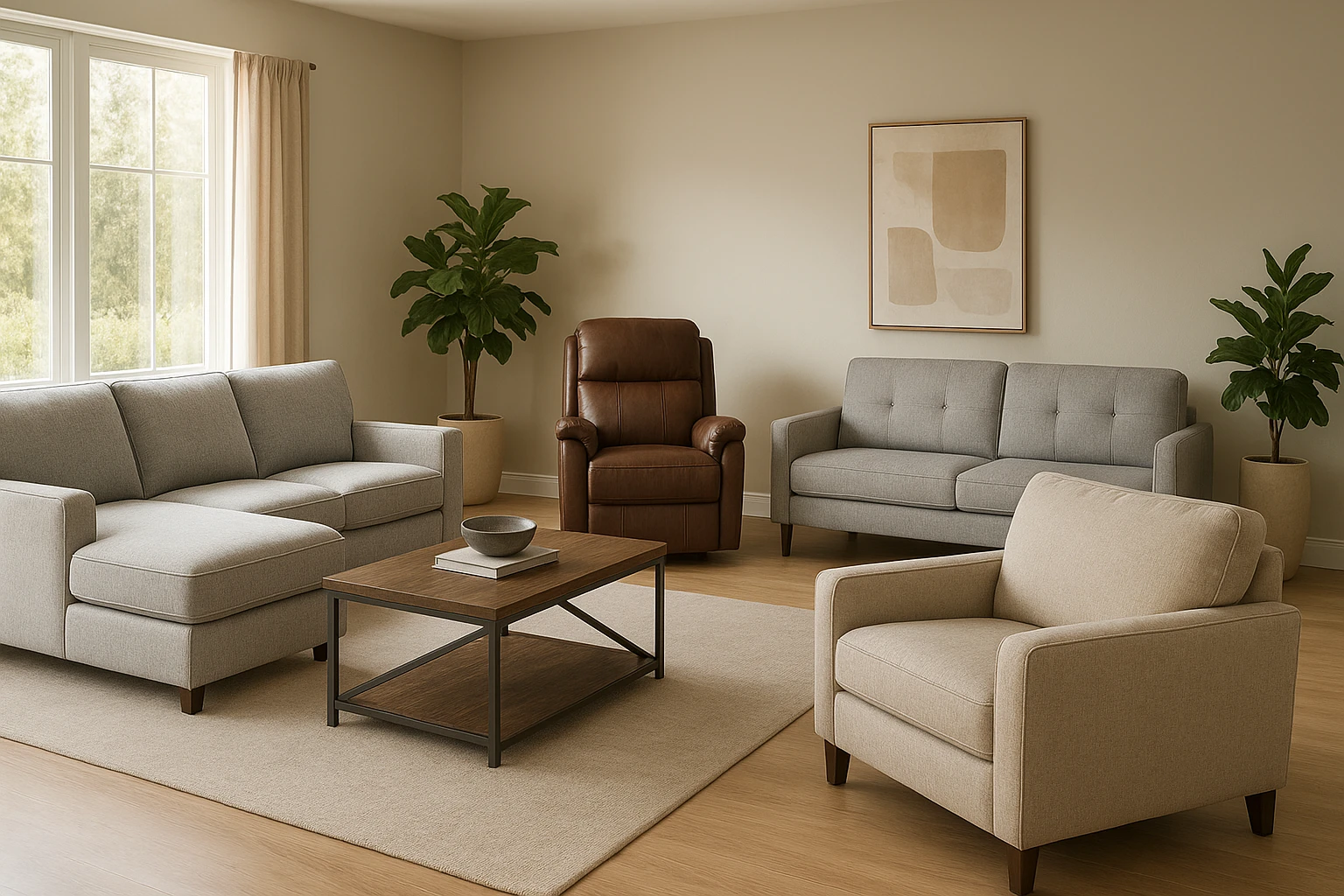
Explore different sofa styles from traditional to modern designs and discover which type best fits your space and lifestyle needs.
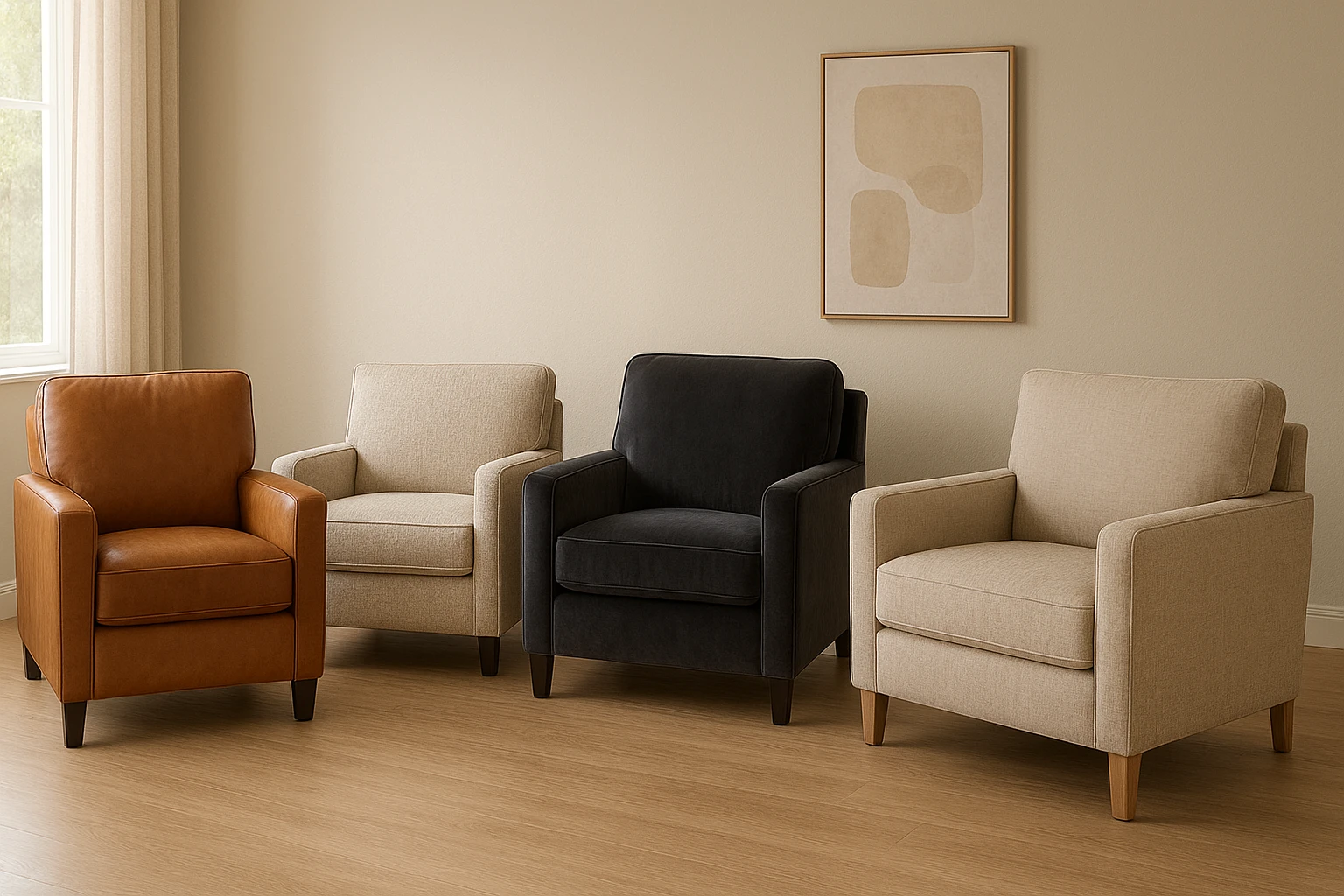
Compare the durability, comfort, and maintenance requirements of different sofa materials to make the best choice for your home.
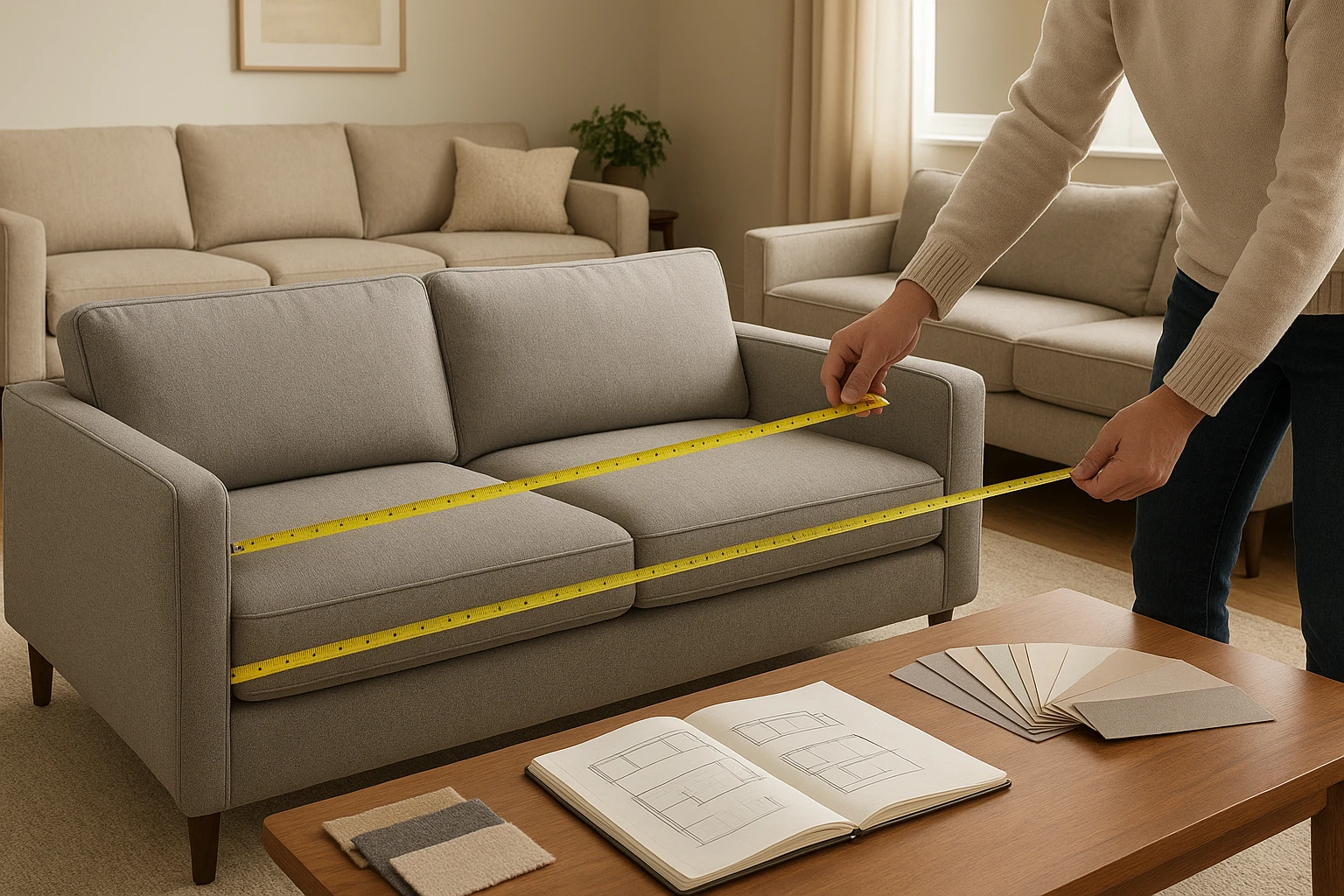
Master the art of sofa selection with our comprehensive guide covering sizing, style, comfort, and quality assessment.
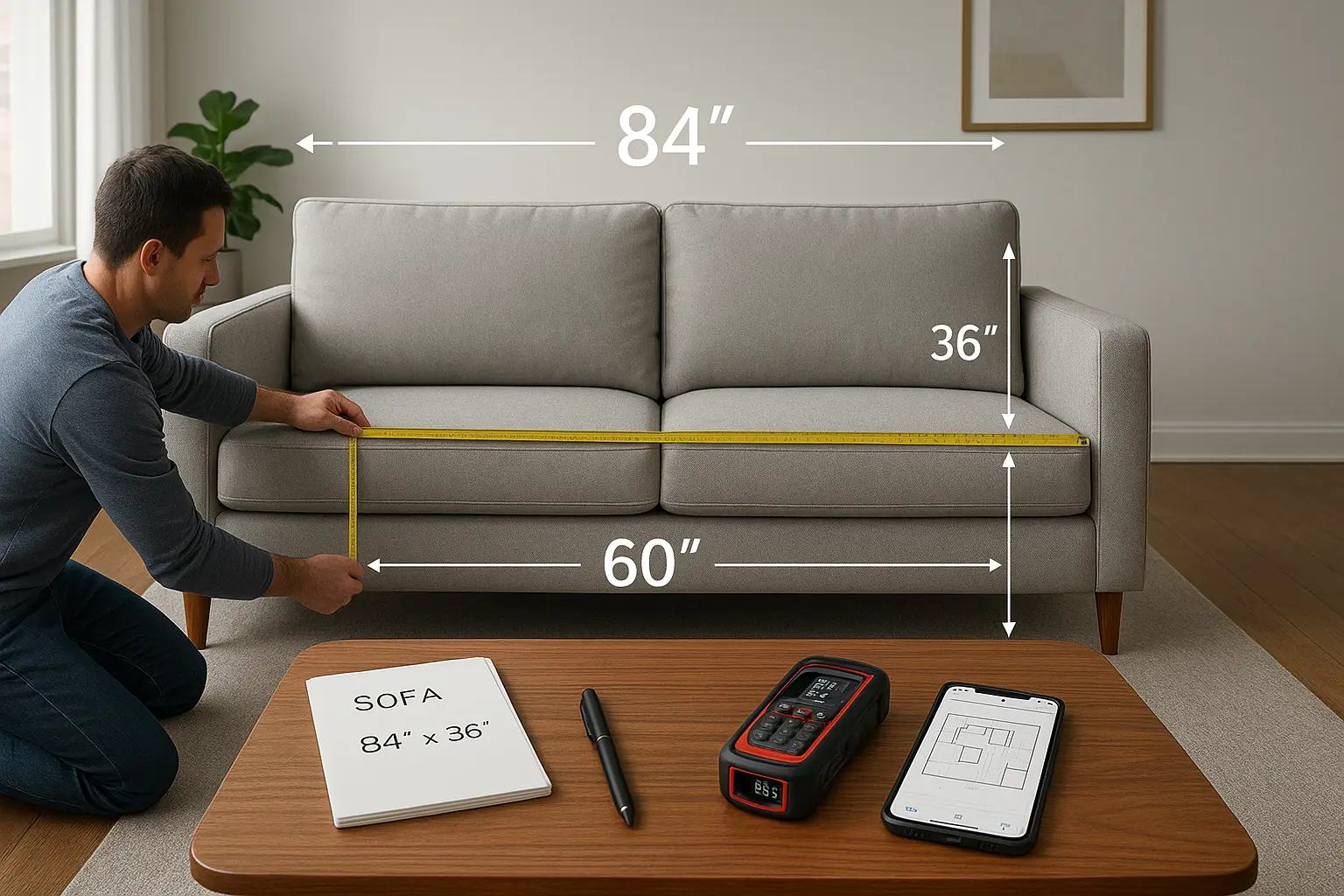
Learn professional techniques for measuring your room and selecting a sofa that fits perfectly while maintaining proper traffic flow.
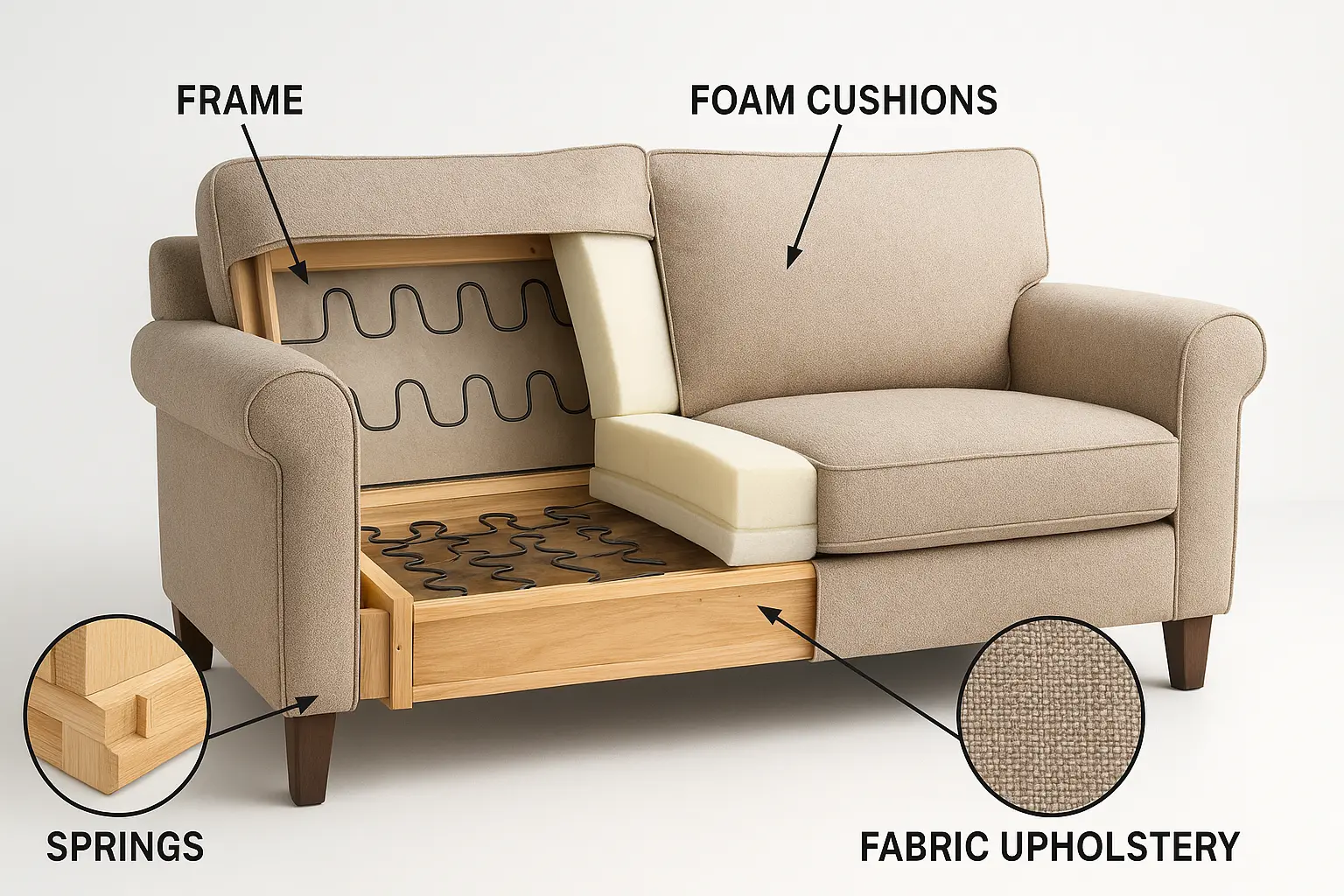
Understand sofa construction elements and learn what makes quality furniture that stands the test of time and use.

Navigate online furniture shopping confidently with our expert advice on measurements, fabric selection, and retailer verification.